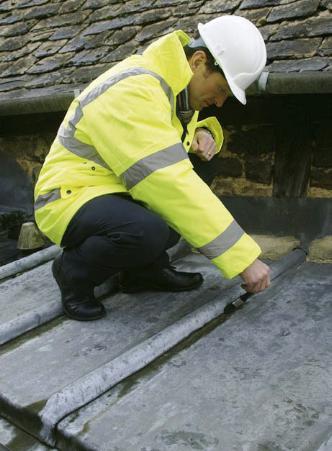

20
BCD Special Report on
Historic Churches
17th annual edition
be applied to the surface. Smartwater
(Smartwater Technology Limited), for example,
has been widely marketed and its use has
been successful in securing convictions.
A marking material can also be applied
as a grease which means that the thief is
likely to become marked, enabling him or her
to be linked with the crime-scene. Because
of its cost, it is normally applied only to
those areas where access is most likely. Two
companies provide this type of product,
Selectamark Security Systems (SelectaDNA)
and RedWeb Technologies (RedDNA).
Crime prevention
Before considering expensive security measures,
it is important to consider all basic crime
prevention techniques. Tese techniques are
unlikely to discourage the more audacious metal
thieves, but they generally target sites where
the likely haul is worth the efort. Churches
with small amounts of lead are likely to attract
the less sophisticated thieves who are more
easily deterred, so make life as difcult as
possible for them. Te following techniques
are most efective when used in combination.
• Contact the local crime prevention
team and ensure they are aware of your
circumstances and the value of any metals
on the site. Check whether or not the area
is a metal theft hotspot.
• Keep gates locked and restrict vehicle
access. Consider installing telescopic
bollards, or similar devices. Remove any
easy means of transporting stolen metal,
such as wheelbarrows and wheelie bins, to a
secure storage area.
• Maximise surveillance levels, for example
by cutting back tall trees.
• Install lighting. Fittings should be
inaccessible and/or vandal resistant. But
avoid lighting areas that are secluded as
this might make it easier for thieves to
operate. It could also encourage youths to
congregate, attracting antisocial behaviour.
• Encourage members of the local
community to keep an eye on the building
and to report any suspicious activity to the
police (particularly the unexpected arrival
of workmen).
• Removing any means of access for thieves
to roofs, such as water butts, waste bins and
tall trees located in close proximity to the
building and ensure ladders are stored in a
secure place.
• Consider planting beds of dense prickly
bushes or trees, for example to reinforce
existing boundaries. Use wide, low beds
where it is important to retain good views.
Climbing or rambling roses for example
might be appropriate over taller walls.
• Conduct regular checks of roofs so
that lead theft is detected at the earliest
opportunity rather than when rainwater
enters the building causing further losses.
• Apply anti-climb paint to drain pipes and
roof guttering to restrict access to roofng.
Te paint should not be applied below a
height of 2m, and warning notices should
be displayed.
Once the most appropriate measures for
the site have been put in place, security
SmartWater being painted on to an area of lead roof (Photo: SmartWater Technology Limited)
A piece of lead fashing marked with SmartWater, a security marking liquid which is only visible under
ultraviolet light. Smartwater contains a unique forensic code that allows items to be traced back to their owners
(Photo: SmartWater Technology Limited)